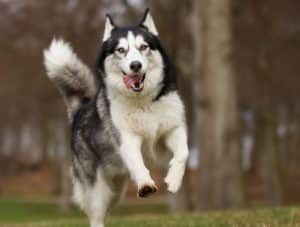What is Renal Disease in Dogs?
- Kidneys act like the body’s filter, removing toxins and waste. Renal disease means the kidneys are damaged and can’t function properly.
- This leads to toxins building up in the dog’s system, causing serious health issues.
- Chronic renal failure (CRF) is common in older dogs and incurable but can be managed.
Why Homemade Food Can Help
- Control Over Ingredients: You can ensure your dog’s food is low in phosphorus, has moderate protein levels, and contains healthy ingredients tailored to their condition.
- Increased Palatability: Homemade meals can be more appealing, encouraging sick dogs with reduced appetites to eat.
Homemade Recipes for Dogs with Kidney Disease
Here’s a summary of the provided recipes. Always consult your veterinarian before making major dietary changes and for advice on portion sizes.
- Recipe 1: Ground beef, white rice, boiled egg, white bread, eggshells (calcium source). Can add warm water or melted butter.
- Recipe 2: White bread with baby meat puree or dog food sauce for flavor. For dogs struggling to eat anything.
- Recipe 3: Meat, boiled potatoes/pumpkin, chicken fat/butter, eggshells. Adjust meat/potato ratio based on disease severity.
- Recipe 4: Turkey, rice, beef. Simple dish for kidney issues.
- Recipe 5: Boiled potatoes with milk, hardboiled egg, baby meat puree, white bread, butter, eggshells. For dogs with reduced protein needs and poor appetite.
Important Feeding Principles
- Low Phosphorus: Essential for managing kidney disease.
- Moderate Protein: Too much protein strains the kidneys. Levels depend on disease severity.
- Healthy Fats: Omega-3s are beneficial, avoid most vegetable oils.
- Suitable Vegetables: Opt for low-phosphorus options like zucchini, green beans, pumpkin, carrots, and potatoes. Always cook the vegetables.
- Vitamins & Supplements: Your dog may need additional B vitamins, vitamin E, C, iron, and possibly others as recommended by your vet.
- Fractional Feeding: Smaller, more frequent meals improve digestion and reduce vomiting.
- Plenty of Water: Encourage water intake, even if it means more accidents.
Key Takeaways
- Homemade food can be a valuable part of managing your dog’s kidney disease.
- Work closely with your veterinarian to create a diet plan specific to your dog’s needs.
- Prioritize low-phosphorus, moderate-protein, and palatable foods.
- Homemade food offers flexibility and control, but it’s important to ensure balanced nutrition.
What Is Renal Disease?
Some diseases that affect our pets are insidious. These include kidney failure. The danger of pathology lies in the fact that it becomes noticeable only in the later stages when the treatment is long, difficult, and expensive.
The kidneys are an organ that acts as a filter in the body: it cleans it from harmful substances, toxins, and toxins. However, sometimes, under the influence of any factors, the kidneys cease to cope with their function – their constituent cells, nephrons, gradually die off, poisoning the body with the products of its vital activity.
With this pathology, the pet’s body ceases to fully function, which is why disturbances begin in other organs.
Chronic renal failure is a disease that cannot be cured. But it is possible to achieve good health for the pet and prolong the life of the dog. In addition to drug treatment, diet is of great importance.
Reason Behind Renal Disease in Dogs?
Kidney disease in dogs is a condition in which an organ is damaged so much that it cannot cope with its functions. It ceases to remove toxins from the blood, regulate blood pressure, and produce substances that improve the synthesis of red blood cells, and the metabolism of calcium and vitamin D.
This causes serious malfunctions in the work of many organs and systems. If the disease progresses, chronic renal failure develops, which leads to the death of the animal.
- Toxins, incl. residues of household chemicals, disinfectants;
- Medicines;
- High or low blood pressure;
- Poisoning;
- Poor heart function;
- Trauma;
- Bacterial, viral infections;
- Worms;
- Foods high in phosphorus;
Symptoms Of Renal Disease In Dogs:
The kidneys are a tenacious organ, and necrosis of its tissues develops slowly, so the first symptoms of the disease are blurred and invisible. Consult a doctor for advice and treatment if your pet has started drinking more and urinating a lot, has no appetite, and is losing weight.
The first symptoms of chronic kidney disease in dogs appear when the organ is 75% damaged and there is little that can be done. People are prescribed dialysis (regular blood purification through a special apparatus) for treatment. Animals are deprived of this opportunity due to the lack of expensive equipment in veterinary clinics.
Other signs of kidney disease in dogs include:
- High blood pressure;
- Blurred vision;
- Damage to the nervous system;
- Weakness;
- Apathy;
- Lack of energy;
- Drowsiness;
- Depression;
- Vomit;
- Diarrhea;
- Bad breath;
- The poor condition of the coat.
In the last stages of the disease, the body does not cope with the work and poorly excretes urine. The animal urinates little, and toxins, and end products of decay are not excreted and circulate in the blood.
There are two farms of renal failure – chronic and acute.
The acute form develops rapidly but is rare. The main symptoms include:
- Lethargy;
- Loss of appetite;
- Profuse and frequent urination;
- Hypo- or hyperthermia;
- Heart palpitations;
- Tremor;
- Swelling of the paws, abdomen, and chest;
- Sores on the oral mucosa;
- Pain on palpation of the abdominal cavity.
- Anemia (remains for a long time);
- Strong thirst;
- A small amount of fluid is released during urination;
- Constipation followed by diarrhea;
- Dry mucous membranes;
Stages Of Renal Disease For Dog:
Unfortunately, the first signs of pathology appear when 50 percent or more of the tissues are affected in an animal. There are 4 stages of kidney failure:
Stage 1- Latent:
Although pathological processes in the body of the dog are already taking place, no external signs of the disease are observed – the pet continues to be mobile, and the appetite is preserved. Kidney failure can only be detected by testing. That is why it is so important to regularly undergo a comprehensive diagnosis of the health status of the pet.
Stage 2- Initial:
If the quadruped has an acute form of pathology, then this stage lasts for several days, if chronic – about 2 weeks. The dog’s thirst increases and urination becomes plentiful. Sometimes there are signs that resemble the symptoms of viral diseases.
Stage 3- Conservative:
In addition to the presence of the above symptoms, the pet begins to rapidly lose weight, eat poorly, and become lethargic and lethargic. He also has problems with the gastrointestinal tract – vomiting, and alternating constipation with diarrhea.
Stage 4- Terminal:
The dog’s kidneys are not functioning. Against this background, there is severe dehydration and intoxication. The pet does not get up and does not show interest in food.
Important! If you notice signs of kidney failure in your dog, take him to the veterinarian immediately.

Homemade Dog Food Recipes:
If a dog is diagnosed with kidney failure, forget beautiful phrases like “a dog is a predator, it must eat meat.” With kidney damage, a potato with bacon or a pancake with butter will be much healthier for your pet than a chicken breast or beef tenderloin.
All foods for dogs with kidney failure are primarily plant-based, and that’s fine. The main thing is that the dog does not refuse to eat such food – the kidneys should not starve. This is where tricks that are inaccessible to the average person come to the rescue, such as adding protein hydrolysates to the feed.
Make sure to consult your vet about how much food should be given to your pet. Put on your apron and let’s make homemade dog food for renal disease now that the fundamentals are apparent.
Make sure to consult your vet about how much food should be given to your pet. Put on your apron and let’s make homemade dog food for renal disease now that the fundamentals are apparent.
Recipe No. 1
Ingredients:
- 120g ground raw beef (but don’t use the dietary lean portion)
- 2 cups boiled white rice (preferably fine-grained, do not salt!)
- 1 hard-boiled chicken egg (previously carefully knead)
- 3 slices white bread (crumble beforehand)
- 1 teaspoon ground eggshell (from a raw egg, dry and grind in a coffee grinder; this is the best source of calcium but can be replaced with 5 mg of calcium carbonate from a pharmacy if necessary).
Preparation:
- If you are afraid to give raw meat, it can be lightly cooked (not overcooked) in a double boiler or pan with a non-stick coating.
- Mix all ingredients. Since the resulting mix is a little dry, a little warm water can usually be added to it.
- You can also add a little melted butter (this stimulates the dog’s appetite and adds almost no protein to the diet).
Recipe No. 2
Ingredients:
- White bread
- Prepared meat dog sauces or baby meat puree
Preparation:
- Cut the bread into slices.
- Spread a little puree or sauce on a slice for smell and taste, and give the dog a treat.
- As a rule, even very sick dogs, whose main nutrition comes through intravenous or subcutaneous infusions, like these sandwiches, it is important for them that the stomach is not completely empty.
Recipe No. 3
Ingredients:
- Steamed or raw beef, pork, or chicken
- Boiled potatoes or pumpkin
- Chicken fat or butter
- 1 teaspoon ground eggshell (or the equivalent of 600 mg calcium carbonate)
Preparation:
- Grind the meat in a meat grinder. From boiled potatoes (pumpkin) make mashed potatoes in water.
- Add a source of calcium. Mix in proportions, depending on the degree of CRF (with uremia, the amount of meat is greatly reduced).
- In the initial stages – 1 part of the meat for 4 parts of potatoes (that is, for 75 g of meat – 300 g of potatoes.
- In the severe stage – 1:12 (for 25 g of meat 300 g of potatoes).
- Season with pre-melted chicken fat or butter.
Recipe No. 4
Ingredients:
- Rice
- Turkey meat
- Beef
Preparation:
- For every cup of rice you want to cook, you need two cups of water. The cooking time for rice is 20 minutes.
- Prepare the remaining ingredients while the rice is cooking.
- The turkey meat should be well-cleaned before cutting.
- Add the turkey meat to the rice 10 minutes into the cooking process.
- Drain the ingredients after cooking them, then set them aside to cool.
- In another pan, bring water to a boil. After the water has boiled, only add the meat.
- For around five minutes, cook the meat. When it turns from red to brown, you’ll know you’re ready.
- Remove the white froth by rinsing the cooked meat in cold water.
- To the rice and turkey, add the meat, which has been cut into small pieces.
- Here is a straightforward homemade method for treating renal problems in dogs.
Recipe No. 5
Ingredients:
- Several boiled potatoes
- Some raw milk
- 1 hard-boiled egg
- 1 jar of baby meat puree (without salt and other additives)
- 2-3 slices of white bread
- Butter
- 1 teaspoon ground eggshell
Preparation:
- Make mashed potatoes and milk.
- Add eggshell powder, baby meat food, finely chopped (crushed with a fork) boiled egg, and crumble bread.
- Drizzle with melted butter.
- This dish is suitable for dogs that need to reduce their protein intake and suffer from anorexia.
Basic Principles Of Feeding Dogs With Renal Disease:
Animals with some kind of kidney disease may suffer from the accumulation of nitrogen-containing wastes, which, in turn, cause intoxication of the body.
The animal may suffer from nausea, vomiting, and loss of appetite. Therefore, the level of energy consumed by the animal must correspond to its needs, which is why it is necessary to regularly weigh and determine the body condition of the patient, using a scoring system.
The duration of the diet is determined by the veterinarian and depends on the stage of kidney disease, the clinical condition of the animal, and laboratory and instrumental data.
In some cases, diet therapy helps prevent the progression of kidney disease. Recommendations for therapeutic feeding, as well as other forms of treatment and patient support, should be adapted to the needs of each patient according to their clinical condition and laboratory results. See below the principles of feeding dogs with renal disease.
Low Phosphorus Content:
In feed for kidneys, the level of phosphorus does not exceed 15-40 mg/kg. When compiling a natural diet, products with the lowest content of this element are used.
The traditional basis of nutrition for any predator is meat, but this product is just rich in phosphorus. You should choose meat sufficiently fatty and with a minimum content of phosphorus. For example, it is less in beef than in chicken. Raw, unpeeled tripe is a good treat for a dog with kidney failure.
Moderate Amount of Protein:
Depending on the results of the blood test and the condition of the kidneys, the level of protein in the food should be 2-3 grams per 1 kg of the dog’s weight. Restriction of protein products forces you to get the necessary calories at the expense of carbohydrates.
In industrial feeds, a large amount of grain is considered a sign of low quality, this is a common way to reduce the cost of the product. But in a kidney diet, carbohydrates can make up 50% of the diet – this reduces the level of protein and phosphorus at the same time.
The Right Fats:
With kidney disease, the dog should not be given any vegetable oils – they contain a lot of omega-6 fatty acids, while omega-3 is needed. Animal fats are not contraindicated (unless the pet suffers from pancreatitis) and increase the palatability of food. It is even acceptable to flavor food with butter or feeds the dog boiled pork.
Suitable Vegetables and Fruits:
Vegetables can not be fed raw, they are boiled or steamed, after which they are crushed into a puree.
The least phosphorus contains: zucchini, green beans, pumpkin, carrots, and potatoes can be given.
Cranberries and green apples are added to the diet.
Boiled vegetables are an important part of the diet of a dog with kidney failure.
Additional Vitamins:
In chronic renal failure, the dog can no longer get the required amount of vitamins from food. The diet (except for Omega-3 supplements) must be enriched with B vitamins (brewer’s yeast), vitamins E, C, and iron. Some doctors recommend supplementing with Coenzyme Q-10 (ubiquinone).
Even under this condition, the pet will periodically need courses of vitamin preparations and amino acids in injections.
Fractional Nutrition:
It is very important! The number of feedings for a dog with chronic renal failure should be increased to 4 times a day, instead of the conventional two meals a day. In no case should a pet go hungry. Fractional nutrition increases the digestibility of food and reduces the risk of “hungry vomiting”.
Water Without Restrictions:
You shouldn’t restrict a dog with kidney disease from drinking, even if it results in peeing between walks. It is good if the content of sodium and other salts in the water is low, so ordinary tap water is not the best choice.
Conclusion:
Veterinarians advise switching to Renal food because of the known level of phosphorus and protein in it. All the recipes in the article work, and work well. Another question is if the dog does not eat any food. Then you need to create a diet for the kidney from natural food.







